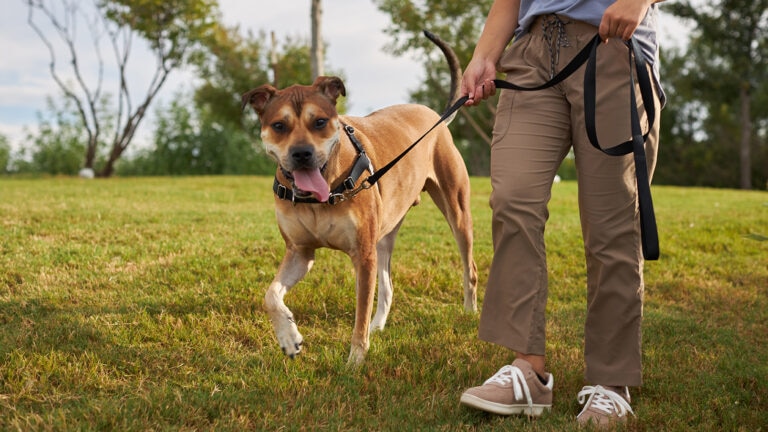Dog Begging: 4 Ways To Break The Bad Habit

Photo by Chewy
A dog’s begging behavior can range from beseeching looks to full-on canine commentary, complete with whining, nose bumps and pawing in the hopes of a handout. It’s not fun to spend a meal competing with a pushy dog, but fortunately there are ways to put a stop to your dog’s panhandling.
Here are our top four tips to break your dog of his begging behaviors:
1. Get Committed
Make sure that you are 100% committed to the cause. That means that all handouts need to stop, whether you’re sitting at the table for a full meal or grabbing a handful of chips on your way through the kitchen.
Dropping occasional goodies for your dog keeps the begging behavior alive—you’re a slot machine that pays off every once in a while—so you need to make sure that you refrain from giving your dog any of the food you’re eating.
2. Turn a Cold Shoulder
It might feel heartless, but once you decide to put a stop to mealtime begging, you should ignore your dog when he pesters you for food.
Your dog is probably used to getting a range of reactions when he begs, from a “knock it off” to scoring the goods. He knows that if he keeps it up, you’ll eventually give in in some way. However, once you commit to eliminating your dog’s habit, you should tune out his demands no matter how voluble or adorable they become (those sad hungry dog eyes and head tilts can be heartbreaking!).
Be prepared for an “extinction burst” during this period, which is a temporary increase in your dog’s pesky behaviors before the begging stops. Your dog might bark louder, paw harder, or pace faster, thinking that maybe you’re not getting the message as to what he wants. It’s critical that you don’t give in during this stage, as doing so teaches your dog that if he resorts to the most over-the-top behavior, you’ll eventually give him a bite from your plate.
If you’re consistent, your dog will realize that begging no longer works and will abandon the strategy.
3. Provide a Distraction
Get your dog focused on something other than your plate while you eat. Offering a special bone or treat-stuffed toy is an easy way to manage the begging behavior and keep your dog happy at the same time.
Consider the item’s “consumption-duration,” or how long it will take your dog to finish it. The goal is to keep your dog engaged with the item during the entire meal, so choose accordingly.
Look for hard rubber toys that you can tightly pack with a variety of dog treats or bones that take time to consume.
You can also consider a toy that requires your dog to move it around to get the treat payout. Your dog will be so busy chasing the toy around the room that he won’t have time to worry about what’s happening at the table.
If you choose wisely and fill well, your dog will finish up right as you do.
4. Keep Him Close
Teach your dog to go to his bed and hang out there during meals. Giving your dog an anchor spot near the table is a great way to keep him from being under foot while you eat. This is a more involved way of tackling the begging problem, requiring a series of training sessions before you can put the behavior to use, but the results are worth the effort.
Teach your dog to go to his bed when you ask during practice sessions, gradually increasing the duration your dog has to remain on the bed before releasing him and giving him a treat. Mimic the mealtime process during your training sessions by sitting at the table and sending your dog to bed. When your dog understands the “go to bed” cue and can hold his position on it for a reasonable amount of time, try it during a quick meal. Finish by releasing your dog and going to the kitchen for an extra special treat.
Begging can be a challenging behavior to stop because it has a rich reward history, but with consistency and patience your dog can become a civilized dining companion!











